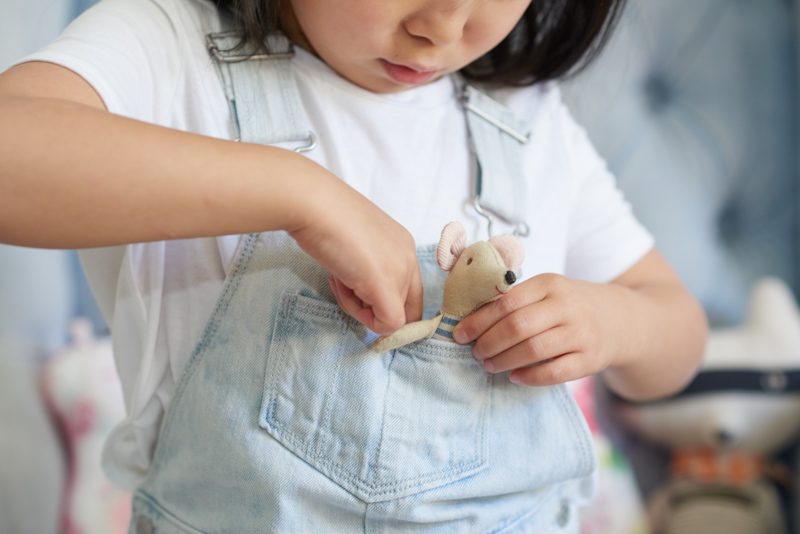
First Timers: Preparing Children For School
Written by Kate MacLean
Photography by Jeanne Chan, Photographed By Maria Del Rio
The first days of school are upon us and for those parents that are bringing their children to school for the very first time, the task (and the resulting separation) can be daunting for all parties. Some children take to school immediately, barely standing still for a mother’s kiss goodbye. Others will run their parents through a decathlon of emotional trials from breakfast all the way to the classroom. To help first timers acclimate to these challenging first days, we invoked the help of a professional who has seen many children (and their parents) through the first days of school: Leigh O’Sullivan Flannery runs the Children’s House of Cambridge, a hybrid Montessori-Waldorf preschool in Cambridge, Massachusetts.
On preparing children for school in the preceding days and weeks:
”When parents first drop their children off at school, there is often anxiety on both sides. The most important thing that a parent can do is to show a calm excitement for this new adventure. If children feel a parent is anxious about dropping them off, they might internalize this to mean that the place they are being dropped off at is not a safe space (why else would my parents be so worried?) When parents discuss the first day of school too much, children can also internalize this as anxiety. Children do not understand time as adults do, and so talking about the transition weeks before isn’t useful and can sometimes lead to more anxiety.
We recommend parents read stories about the first day of school (our favorite for older toddlers through elementary school is The Kissing Hand), but without too much discussion about the child’s specific transition. For the week leading up to school, sit with your child and tell them about their school. Walk them through what the first day will look like: how long you will stay, who the teachers are, and what the children might do at school. Answer any questions that are asked in as matter-of-fact a way as you can. If a child mentions feeling worried, anxious, or scared, name those feelings and acknowledge them. It is important to accept and respect your child’s temporary unhappiness, as it is very real and very normal. Say things like ‘I know you feel sad when Daddy leaves, but you will have a good time, and I will be back very soon.’ Avoid the temptation to pressure your child not to cry or to offer bribes for ‘good behavior’. Learning to cope with sadness is an important learning process for your child.
With older children you can ask them to be specific, ‘what are you worried about?’, and even walk them through some scenarios, ‘Ok, so if nobody plays with you, what can you do?’ and come up with some solutions.
We also recommend setting up some time before school starts to meet up with other children who will be in class with your child. Having some familiar faces will help with the transition. Meet at a park, and just let the children play. They will interact as much or little as they want without pressure. When the first few days of school come, they will remember the play, and it will help them feel comfortable in the class.”
The hand-off moment:
“Never sneak out on your child! As tempting as it is, sneaking out the door can make matters worse. Although you do not have to stay to witness a meltdown, it can be very upsetting for the child when they realize Mom or Dad has simply disappeared without saying goodbye. You want your child to know unequivocally that he or she can trust you, and if you leave without saying anything, they can begin to question that.
Discuss with the child and the teacher when the hand-off will happen and how. Some children do best if the parent can see them get settled into an activity and then they can wave goodbye, and the child returns to play. Some children will need to be handed directly to a teacher. However you and the your teacher decide to do it, make sure to stand firm when that time comes. It is not helpful, even if a child is crying to say, ‘Ok, I’ll stay a few more minutes.’ They may stop crying, but they will just cry again when the leaving time comes.
Create a goodbye routine that is unique to you and your child. Preschoolers crave routine, and parents who establish a consistent goodbye routine usually have better luck with successful goodbyes. This can be anything—a secret handshake, a secret hand gesture, a kiss on the forehead, reassuring thumbs-up, or nose rub. By giving your child something he can count on, he is likely to go to school much more willingly and that special moment between the two of you is a great way to start the day, and provide that sense of reassurance.
Transitions are easiest at or near the door. When a child is worried and clinging to the parent, it can be useful for the parent to come in and get the child ready for the day (taking off their coat and putting on indoor shoes, and settling into an activity). However, it is really important to have an exit strategy, and to follow through on it. Goodbyes should be short and positive. The best thing you can do is kiss them goodbye, and tell them you will see them soon.”
So much crying:
“Each child is different, and each child will cry a different amount. There is no amount of crying that is too alarming. Most children do stop crying when the parent leaves, and even if they cry on and off through the day, they can be redirected and comforted by the teacher. In some rare instances, a child needs more transition time with the parent, and they won’t be comforted or redirected by the teachers. When this happens, the answer is not that the child is not ready for school, but that they need more time with the parents and teachers together to become ready for the separation.”
A comfort bag:
”Sometimes, especially at the beginning of school, it helps for children to have a transitional object that they love (a doll, truck, shirt, pencil—it really runs the gamut). We recommend sending your child with a comfort bag filled with a few items that will offer comfort, and remind them of home. Place a favorite book, a few photos of your family (so they know you are always with them), a package of tissues, or a small teddy—things that you know will bring comfort. Your child can keep the bag in their cubby, and whenever they feel uneasy, they can take the bag to the library corner, cuddle the teddy, look through the book, and take a look at the photos.”
Keeping healthy:
“Your kid is going to get sick! Just be happy that the more they get now, the healthier they will be later. Always wash your child’s hands right before they enter the classroom, and right after they leave. We swear by a teaspoon of honey eaten every morning. Honey is full of sickness-fighting power, and what kid doesn’t love it? Don’t feed it to a child under one, and make sure it is real and raw and local. We also recommend staying away from anti-bacterial spray or soap. It’s much better to just use soap and water.”
Getting involved in your kid’s school:
“We love having parents come in and share a passion or a cultural event/holiday/tradition from home. Though the first few months are not a great time to volunteer, starting in the end of October, it’s great to have parents come in. Think about what you love to do, and ask the teacher if there are times of day they might need help. You can come in on a regular basis, or once a year. We have had parents help with art projects, cooking projects, snack prep, holiday circles, and more. We once had a parent bring in a taxidermy project! Another way to get involved is to ask teachers what they need in terms of bigger supplies. Get the parents together to purchase it for the school. Finally, just staying involved at drop-off and pick-up, saying hello, and learning a bit about the teacher and the classroom can go a really long way.”
Share this story




